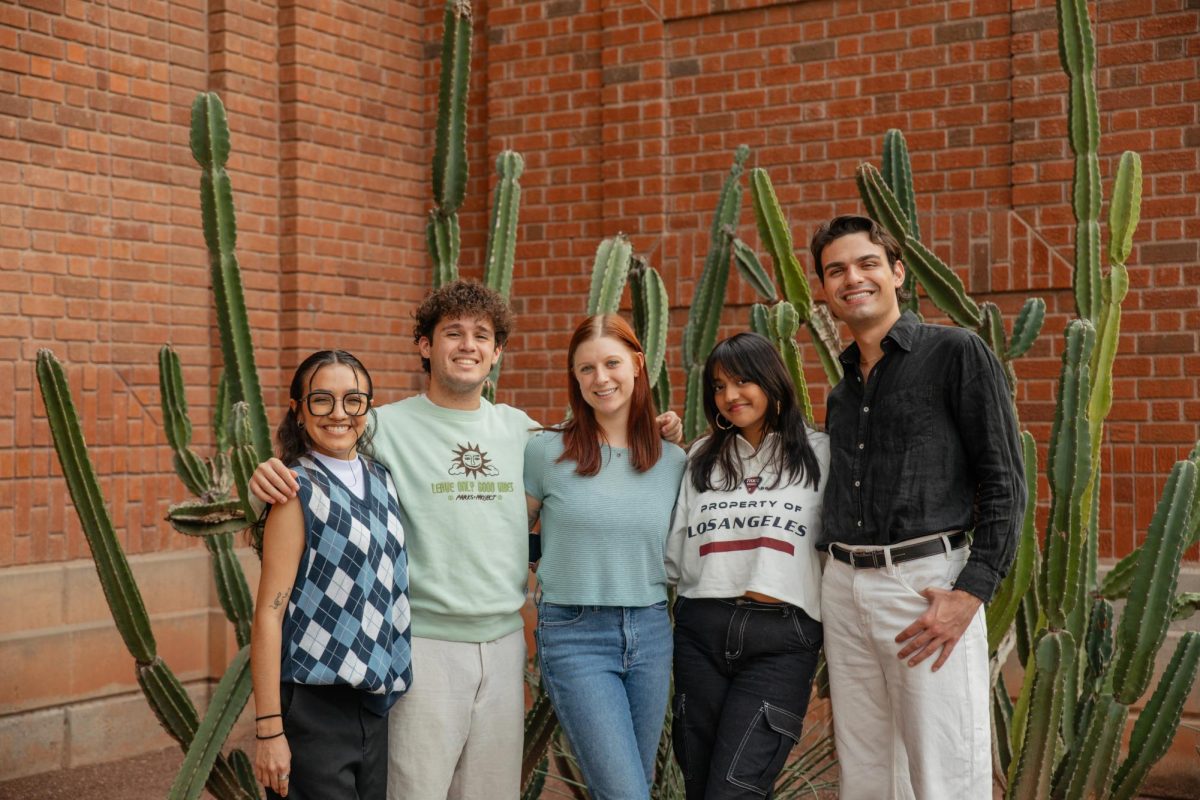Researchers from the University of Arizona and Arizona State University presented the findings of their smart tree watering research the morning of Nov. 13 at the Arizona Experiment Station Campus Agricultural Center.
Funded through an Arizona Board of Regents’ Research Grant, researchers and graduate students studied the effects of tree watering water conservation and the state’s ongoing heat crises.
This year, Tucson experienced 100 consecutive days of 100-degree temperatures, an issue UA and ASU researchers are well aware of. ABOR’s grant program will pair the universities with state agencies.
These efforts toward water conservation and tree health gained national attention and the team’s research was selected for an Honor Award from the American Society of Landscape Architects, the highest level of award in the field. The research will be presented at the American Geophysical Union conference in Washington, D.C. this December.
Lead researcher Bo Yang told The Daily Wildcat about the goals of their tree watering study.
“This research is funded by the Regents’ Research Grant based on tax dollars, money we are generating for this research to benefit all the people in Arizona,” Yang said. “The idea is to use these research findings to help people in backyards, cities, public spaces, parks and open areas.”
After studying the 80 tree saplings on the property, the team projected that 1,700 gallons of water could be saved per year, per tree through the early stages of tree establishment.

Vanessa Buzzard is a researcher and faculty advisor on the project.
“My research primarily focuses on trees and thinking about tree health,” she said. “For this project, we’re looking at slow water practices and different watering techniques to help with tree establishment — so that’s the first year or two of their planting.”
ASU doctoral student Shiqi Wei said, “Mainly the field work is done here at UA and back at ASU we do the modeling work. We set up a land surface model to study the land and atmospheric interaction in this area and to study the climate change, climate, earth surface geology or any human activities that could impact this piece of land.”
UA researchers typically extract data from the field, while ASU researchers use a machine-learning model that replicates field data. The Phoenix model, Wei explained, simulates the Phoenix area to determine how tree planting would affect different communities.
Darin Jin, a second-year landscape architecture student in the UA graduate program, became involved in Yang’s research last summer. For Jin, making this information accessible to as many people as possible was a rewarding experience.
“I see a part of our job as being able to distill the complex information into something more simplified and streamlined and have these takeaways so that people can understand it and do it in their way,” Jin said.
Yang also touched on the accessibility of their findings for the community.
“In terms of breaking a complex research question into simple tasks, we’re doing that in terms of irrigation scheduling and data collection,” Yang said. “For every tree, we have a QR code and hold public meetings here [Campus Agricultural Center]. We share all the data and information online.”
Dean of the College of Architecture Nancy Pollock-Ellwand said, “I think what we do very well at this university is and it happens in all of the colleges, is getting the students to do applied work in the community, that’s a contribution to the community.”
“It’s very important to say that the American Society of Landscape Architects saw this as a top winner in terms of the research category. I think it’s a reflection of the excellence of our university, our students, our faculty and the kind of work they’re doing together.”
Yang said that in the future they are working to design a simple, cost-effective irrigation system that can be easily implemented in community spaces and people’s backyards.
Follow the Daily Wildcat on Instagram and Twitter/X















